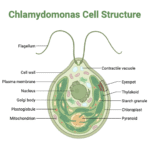Basic Microbiology 6 Views 1 Answers
What are chemokines? Give one example.
What are chemokines? Give one example.
Answered
Chemokines are a subset of cytokines that specifically guide the migration and positioning of immune cells within tissues and between different organs. They play a crucial role in the immune response by directing the movement of leukocytes (white blood cells) to sites of infection, inflammation, or injury.
Functions of Chemokines:
- Cell Migration: Chemokines bind to specific receptors on the surface of immune cells, triggering intracellular signaling pathways that cause these cells to move toward higher concentrations of the chemokine.
- Immune Surveillance: They help direct immune cells to lymph nodes and other peripheral tissues where they can encounter antigens.
- Inflammation: During inflammation, chemokines are produced in large amounts to attract immune cells to the site of infection or injury.
Example of a Chemokine:
CXCL8 (Interleukin-8 or IL-8):
- Function: IL-8 is a chemokine that primarily attracts neutrophils to sites of infection and inflammation. It plays a key role in the inflammatory response by promoting the migration of these cells to areas where they are needed to combat pathogens.
Did this page help you?




